What happens when you combine two instructional strategies like PBL and jigsaw? That’s exactly what I did when developing a new workshop for the TCEA 2020 Convention & Exposition called Coaching for Strategic Technology Integration. My initial results? Positive. In this edition of napkin-PD, I share the results of the new structure of my experimentation.
Session Description: Ready to set your students and teachers up for learning success? You will need be strategic. In this session, learn how to blend four components into one. You will adopt high effect size instructional strategies. Then, use a process for blending technology into learning experience. Finally, reflect on a pupil-focused results coaching tool.
Essential Elements
In each of my napkin-PD sessions, I focus on organizing the entire workshop into three chunks. Those three chunks may vary a bit in title, but generally fall into these areas:
- Explore. This is where participants learn something new. They are developing background knowledge on a subject.
- Adapt/Create. This is where they make connections between new information and old.
- Share. They create something tangible.
For the 50-minute session of this 90-120 minute learning event, I had to truncate some of the activities or drop them altogether. Let’s take a deeper look.

Revisiting the Objectives
In my session, I wanted to achieve the following objectives. You’ll note that I have attempted to word them as “teacher clarity goals.” The reason why is that the teacher clarity strategy is a high-effect size strategy with an effect size of .76. Here’s a little background on teacher clarity if you are not familiar with it:
Teacher clarity relates to organization, explanation, examples and guided practice, and assessment of student learning. It can involve clearly communicating the intentions of the lessons and the success criteria.
Clear learning intentions describe the skills, knowledge, attitudes, and values that the student needs to learn
There are a lot of ways to use technology to support teacher clarity. In this case, I decided to be up front with adult learners and so told them what my goals were at the start of the session:
- Today we will examine, explore, and reflect how to achieve academic standards. We will do this through the combination of several components. Those components include high-effect size instructional strategies, strategic technology, and pupil-centric coaching efforts.
- So we can construct learning experiences for students and staff that will lead to accelerated learning and growth.
- We will know we have it when we reflect on our use of action steps via educational frameworks that provide insight into our work.
To organize this learning adventure, I divided it into three big pieces.
Did You Know?
Sign up for one of our Google Certified Educator certifications. You’ll learn about more than Google Meet, as well as earn 12 CPE hours per course. Use these courses to get Google Educator certified. Find out more online.
Chunking Learning into Modules
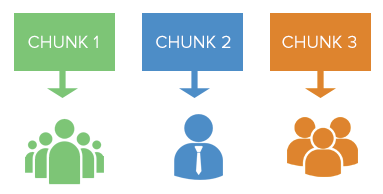 Creating bite-sized chunks can be a lifesaver for learners. It makes the learning manageable, memorable, and improves comprehension (source). For adult learning participants, it gives them autonomy within each chunk. That is, they can explore content as they choose. It also enabled me as the lesson designer to take complex content and make it easier to process in the short time available.
Creating bite-sized chunks can be a lifesaver for learners. It makes the learning manageable, memorable, and improves comprehension (source). For adult learning participants, it gives them autonomy within each chunk. That is, they can explore content as they choose. It also enabled me as the lesson designer to take complex content and make it easier to process in the short time available.
The main pieces, which I further chunked into smaller bites, included:
- Meet the Problem. “There’s a big school board meeting coming up. Your superintendent needs you at Central Office right away. Drop what you’re working on and head on over there.”
- Crafting Your Solution. Now’s the time to put your heads together to craft the best presentation you can that combines the four key elements.
- Reflect. Take a moment to reflect on the process. Explore the gap between where your organization is now and the ideal and then reflect the ideal in your team’s presentation with steps to get there.
Each section involved more work.

Smaller Bite-Sized Chunks
To get people moving in the right direction, I introduced a problem via role play. This involved casting some audience members (I recruited them as they arrived). The unlucky folks stepped into the role outlined in the problem below. Here’s the call to action, although you can read the whole scene online:
“Our school board president and I have spoken. Our scores say we are treading water, maintaining the status quo. For some districts, that would be enough. But here in our district, we must have a focus on accelerating student growth more than one year.”
“We have agreed that we’re going to put together a plan for moving forward, a plan that accelerates growth for ALL students. For too long, we’ve been working in silos with several initiatives. We will put those together. We will be successful, we will ensure accelerated student growth is our TOP priority.”
“I’m going to ask you to divide up into several teams to deepen your knowledge. You will become an expert in your area, then share it back with your team. Afterwards, you’ll make a first effort at putting together a board meeting presentation.”
“I want you to know that I’m counting on you. The future of our district is in your hands. Ready to begin? If so, I’m going to turn it over to Miguel to get this started.”
If you’re familiar with PBL, you know this is an ill-structured, messy problem. My goal with this problem was to set up (and this is what’s different from other napkin PD) a jigsaw activity.
Revisiting the Jigsaw Method
Wait, wait, why am I using a jigsaw? The goal of this workshop was to introduce participants to some amazing ideas. This made it a surface learning activity, that is, an activity focused on introducing new concepts to students. Why use a jigsaw? The jigsaw method enjoys an effect size of 1.20, which is very high, and is a cooperative approach to learning. You can learn more about it through other blog entries, but here is a quick overview:
Following this method, a teacher introduces a main topic and several subtopics. Jigsaw students divide into “home groups,” and each member of the home group chooses a subtopic.
Then, students form expert groups to study their assigned subtopic. They do this through research and discussion.
After delving into the subtopic, they return to their home group to report on their findings.
At the conclusion, each home group member has learned about each subtopic. They have learned from their own investigation or a member of the relevant expert group.
The other strategy in use is problem-solving teaching (.68 effect size). I regret that in a 50-minute session, there wasn’t time. We couldn’t get to the part that had participants solve a new problem.
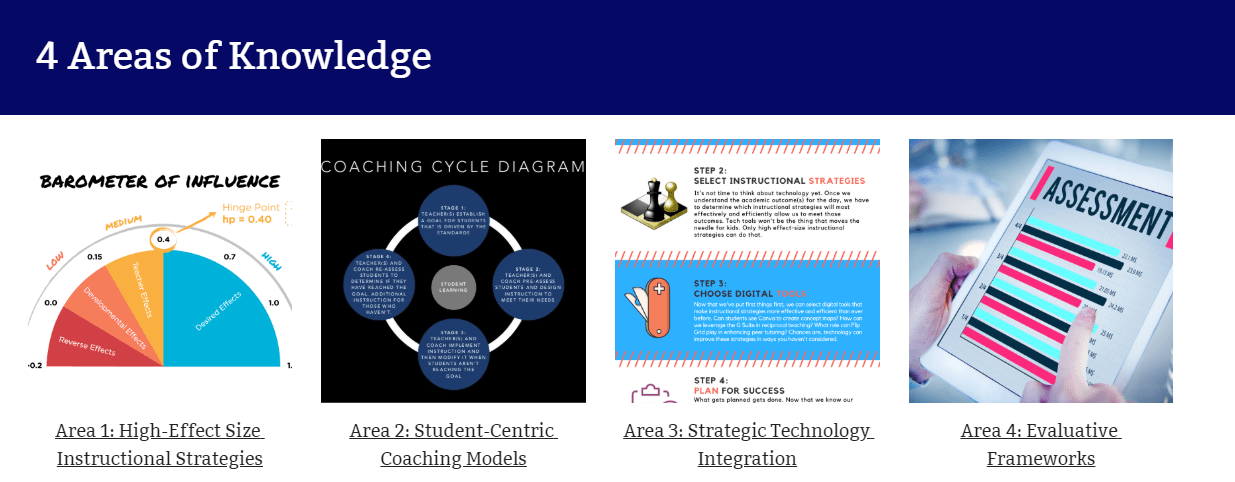
Turning a PBL into a Jigsaw Activity
This is the part I was most excited about. Could I embed a jigsaw activity inside of a PBL? The answer is, “Yes, you can.” Each of the four member teams would join their expert group. Expert groups worked alone at first, then together to explore the project stations. I provided paper copies of a digital organizer. Of course, some chose to use the digital version on their devices.
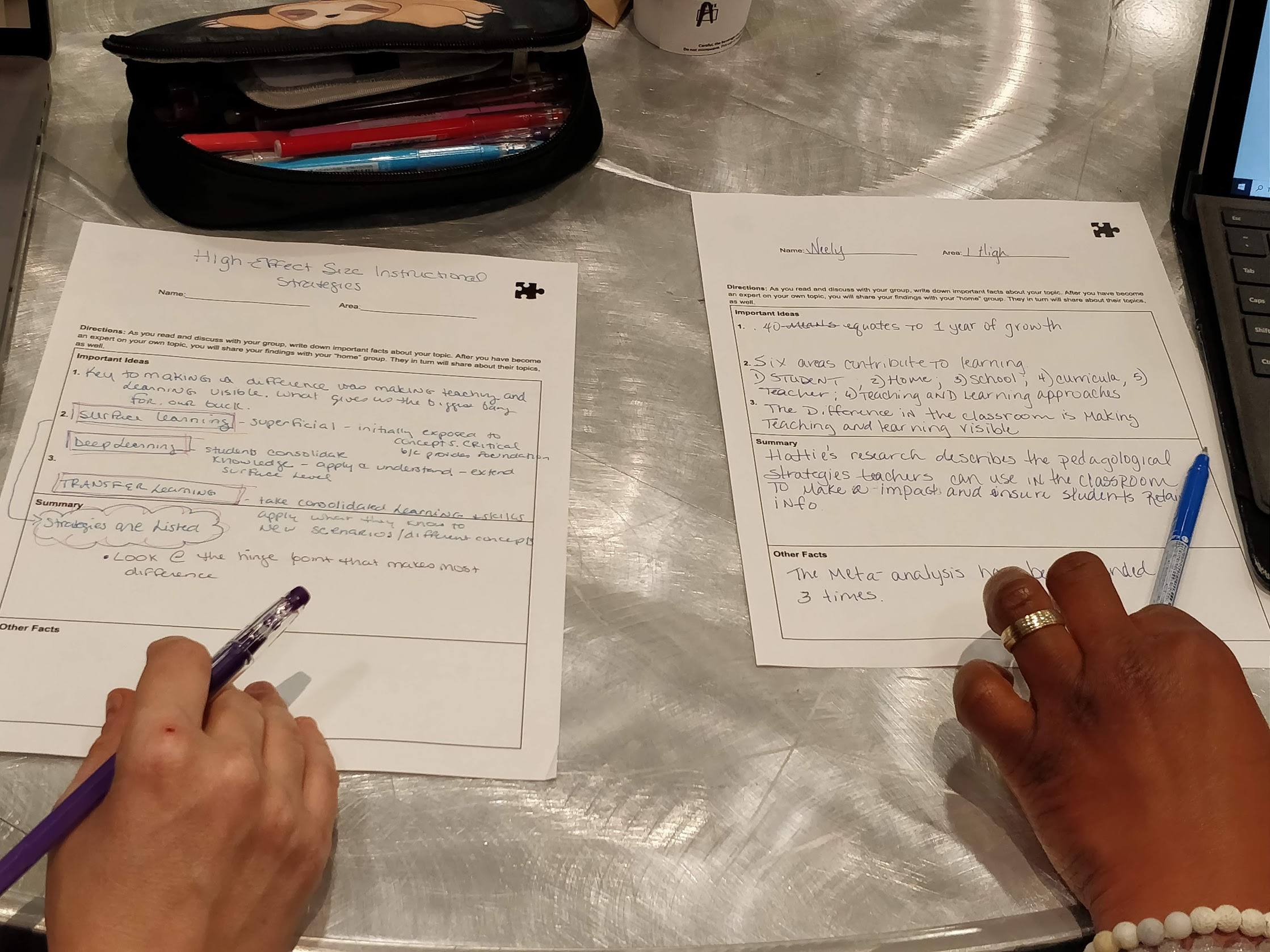
Project Stations
 The project stations focused on four key areas. Those areas included:
The project stations focused on four key areas. Those areas included:
- High-Effect Size Instructional Strategies
- Student-Centric Coaching Models
- Strategic Technology Integration
- Evaluative Frameworks
Putting these components together was not obvious to me. In fact, I outlined everything ahead of time because outlining made it a lot easier for me. You can see my first draft outline, although it had a few more revisions. In the end, the organization of each station followed a pattern.
Project Station Organization
- Picture and overview
- Contained three parts, in no particular order:
- Watch the video. This included a video and a short summary of the content.
- More material to explore
- Explore
- An expert discussion question
When I revise each of the project stations in the future, I will be more deliberate about structuring them. That is, I will make each part focus on media type and action desired. For example, here’s a revised outline:
- Overview with picture
- 1: Watch the video
- 2: Explore source material
- 3: See examples
- An expert discussion question
Now, if you are familiar with the jigsaw method, you may see that I included an extra piece. That extra piece is the expert group discussion question. I wanted to focus experts’ discussion given the time constraint. This had the desired effect.
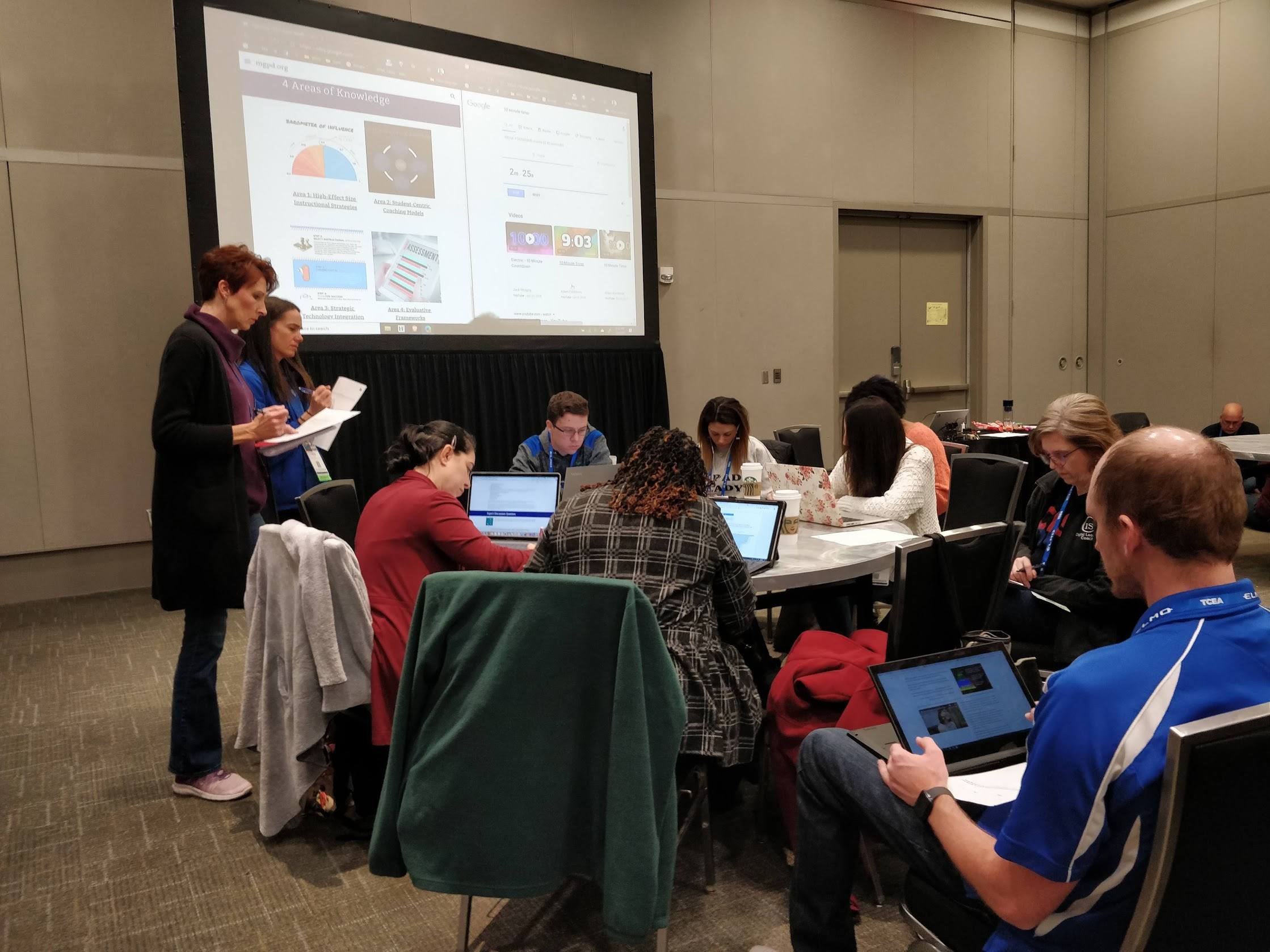
Listening in on Participant Conversations
One of the most rewarding aspects of the jigsaw method is listening to expert groups dig deep. But having them report back to their home groups can be a joy as well. After the time was up, I invited insight sharing from the whole group. What amazed me was the depth of insight. Participants reflected the information provided in the project stations. In a way most curious, they owned the information as they shared it. This was fantastic and I couldn’t have been more delighted with their work.
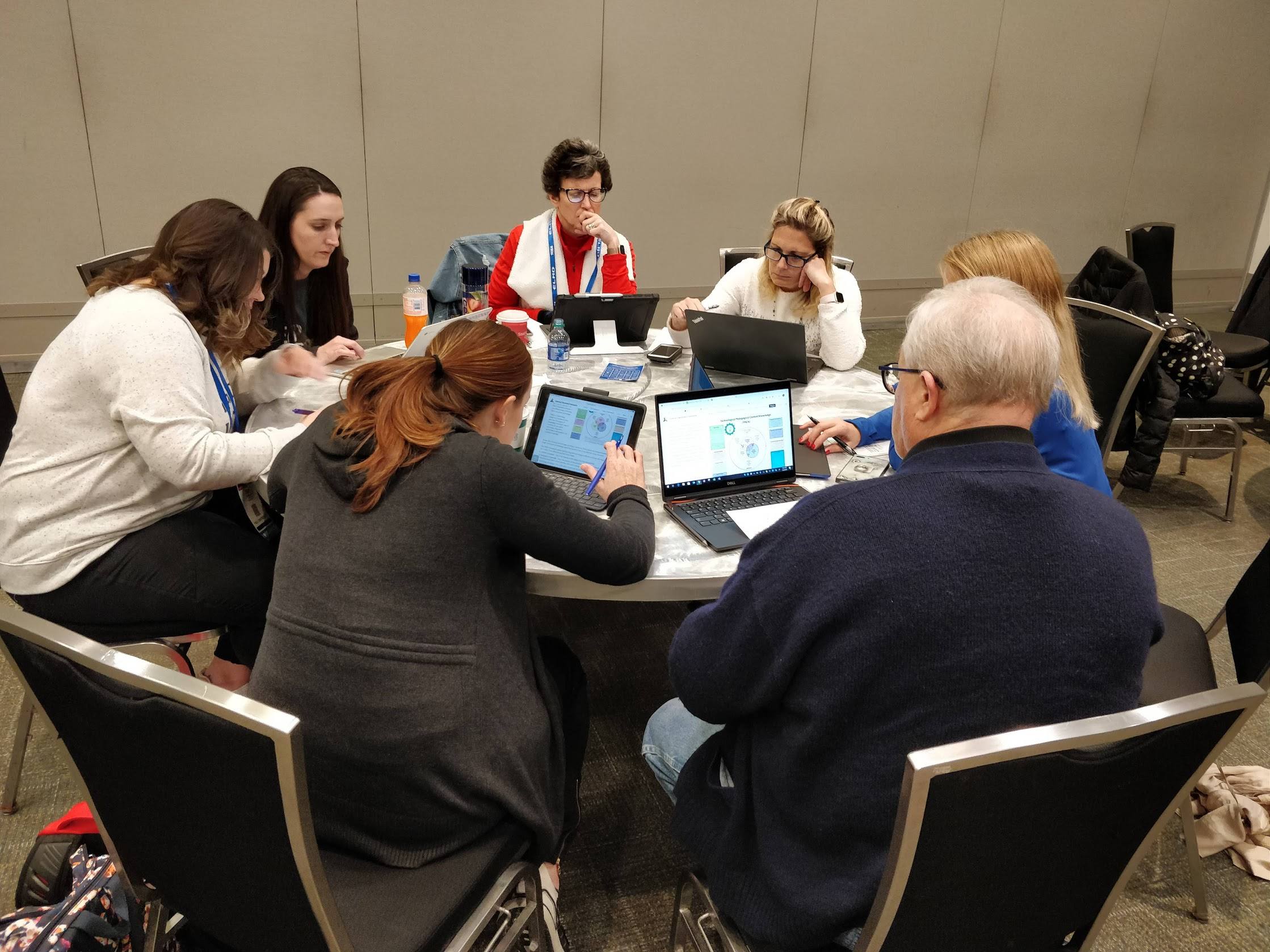
Reflection
As time elapsed, I realized that we had spent the entire time on the jigsaw. To have executed this workshop, an entire 90-120 minutes would have been desirable. I am still pleased with the first module work, especially as participants expressed how happy they were with the juxtaposition of these ideas.
Want to schedule TCEA professional development that focuses on project-based learning? Fill out a TCEA logistics form. We can help you turn your napkin professional development plans into a reality. And be sure to check out other“napkin PD” blogs here.

